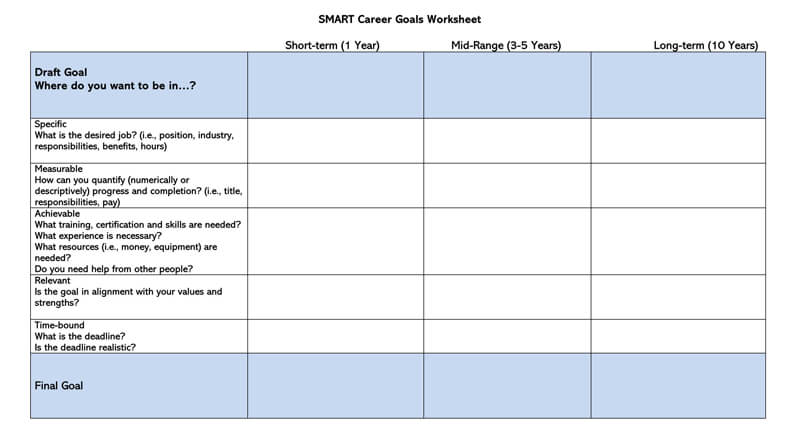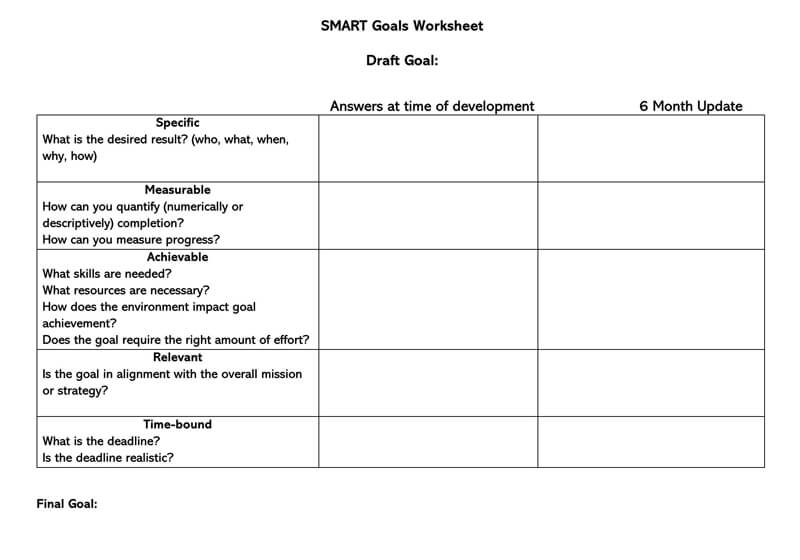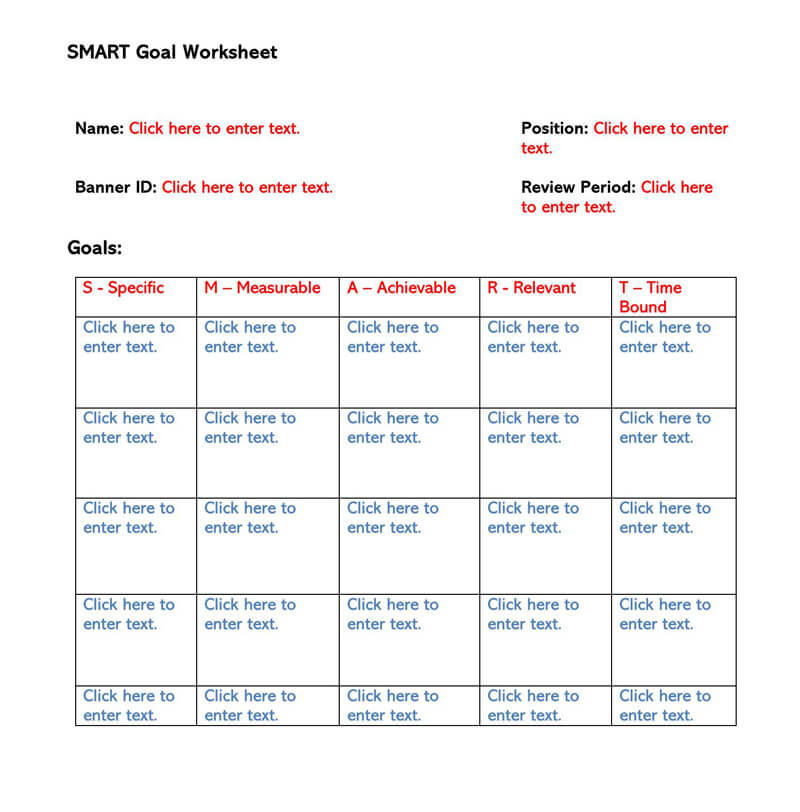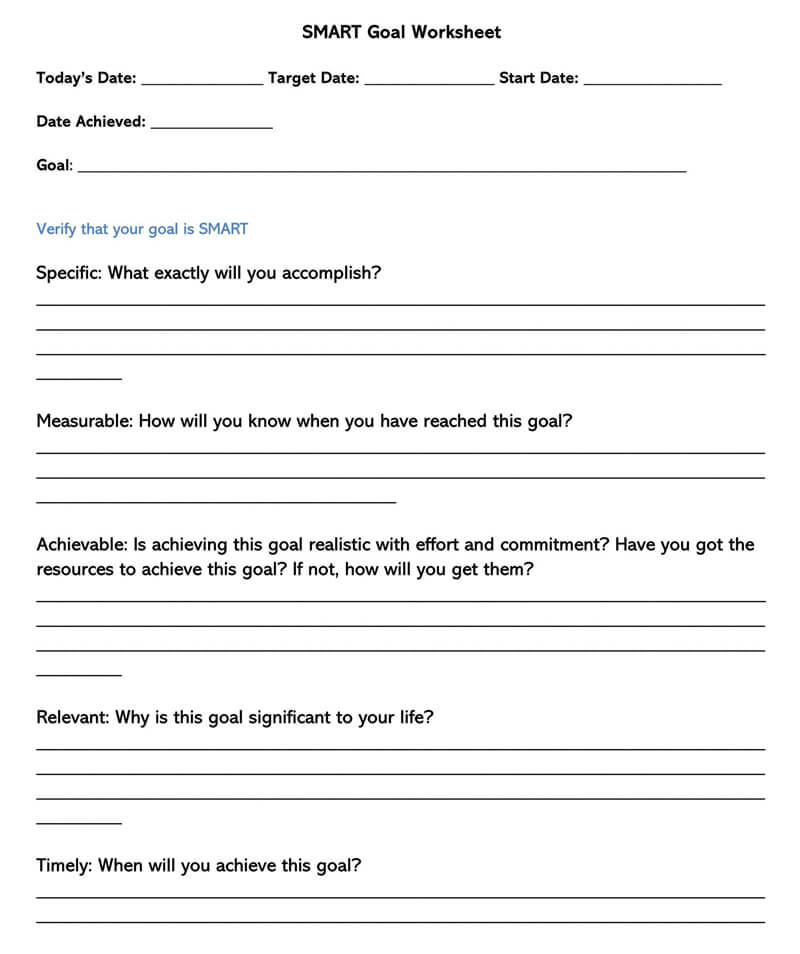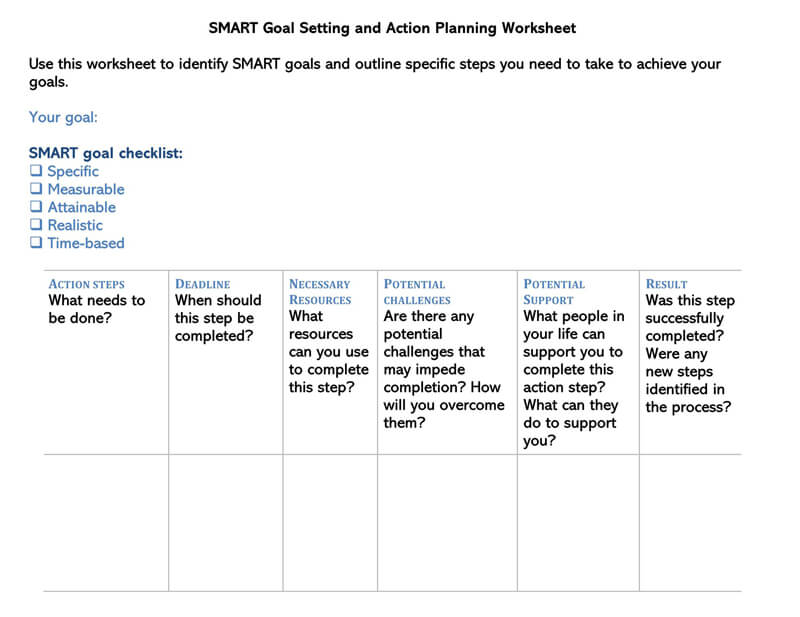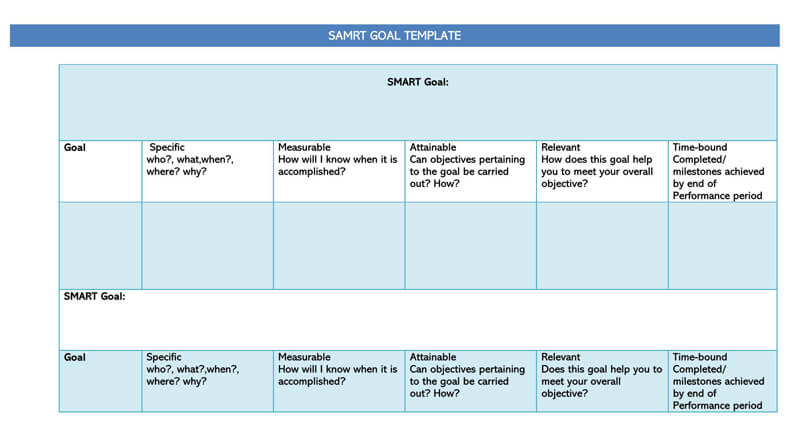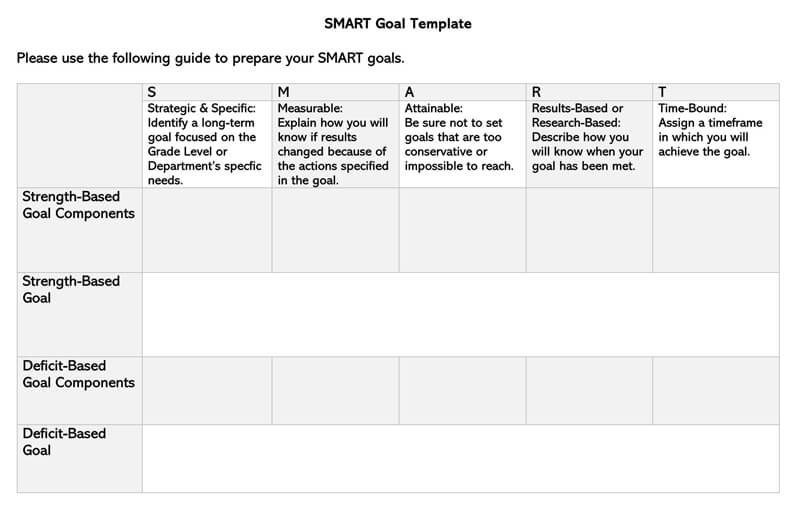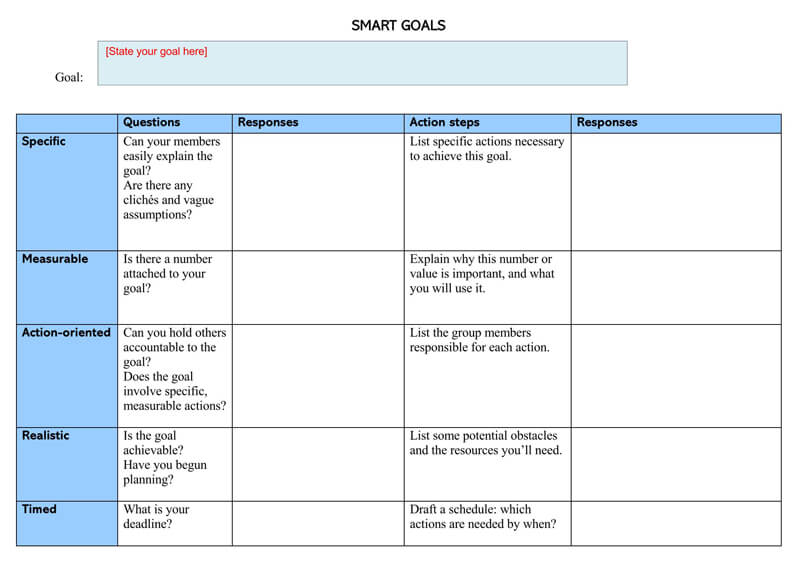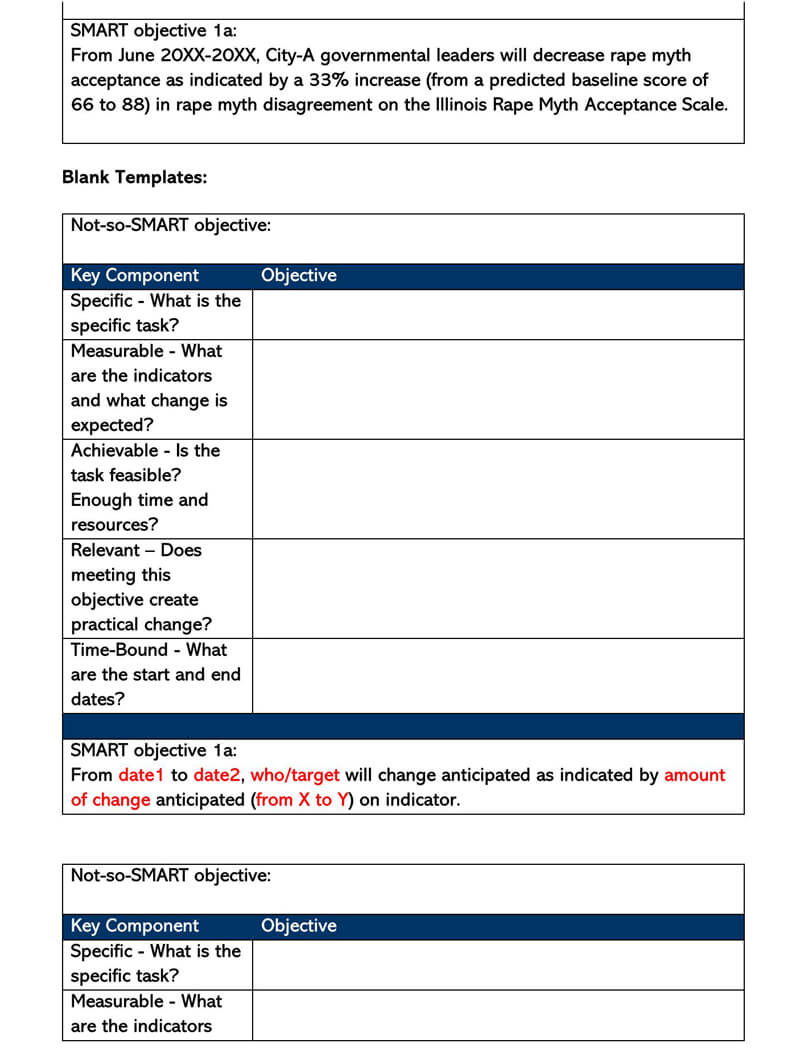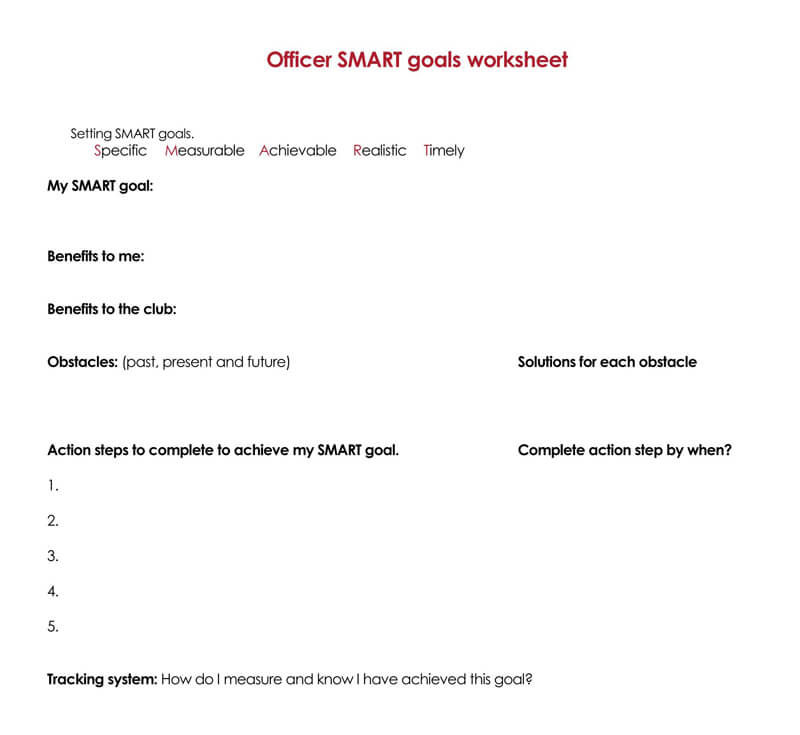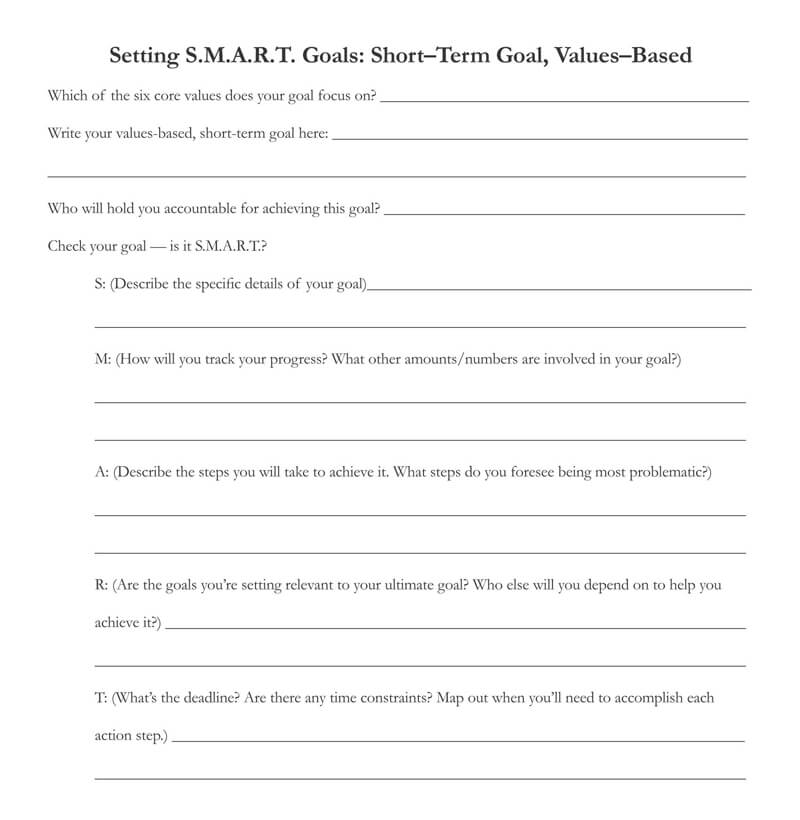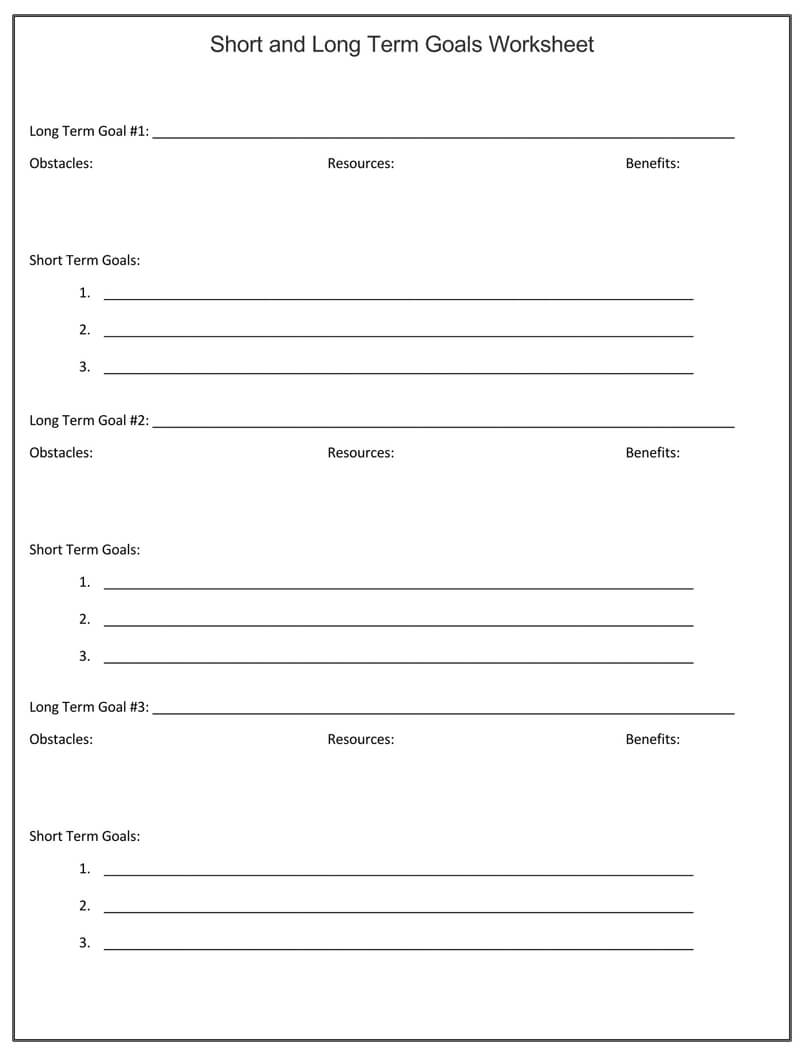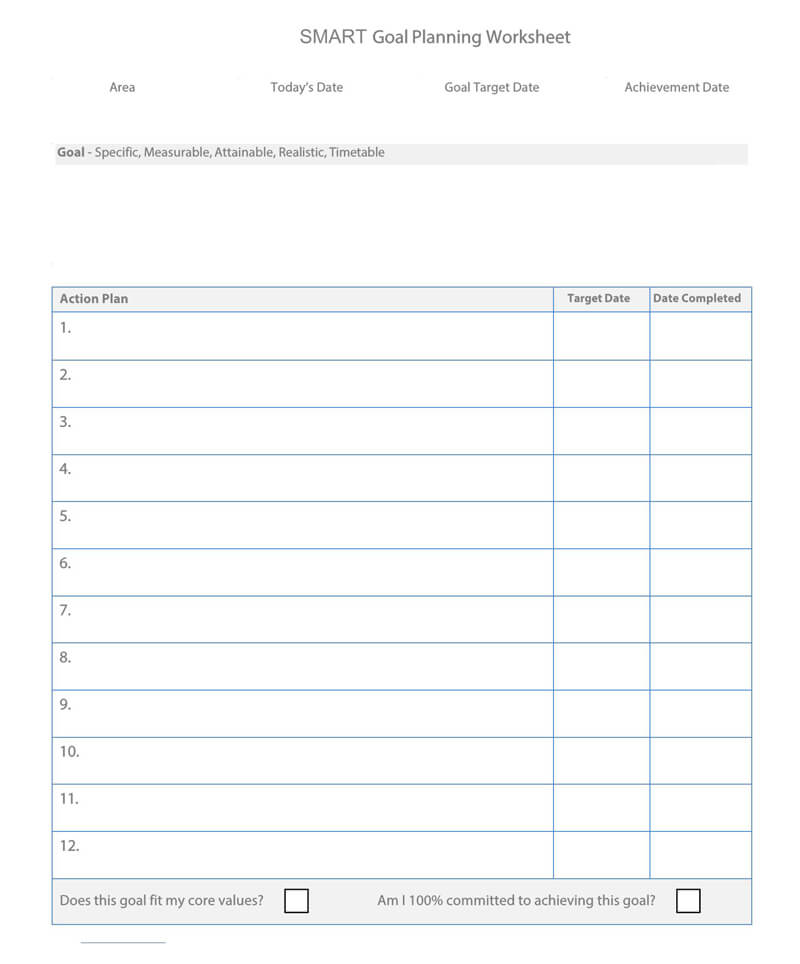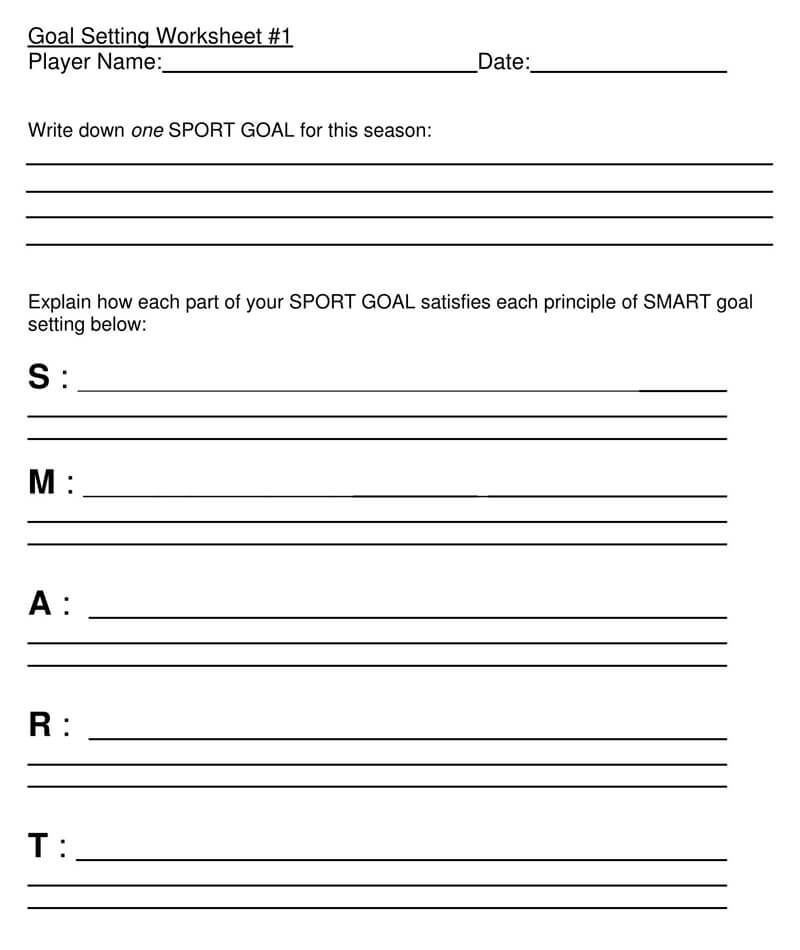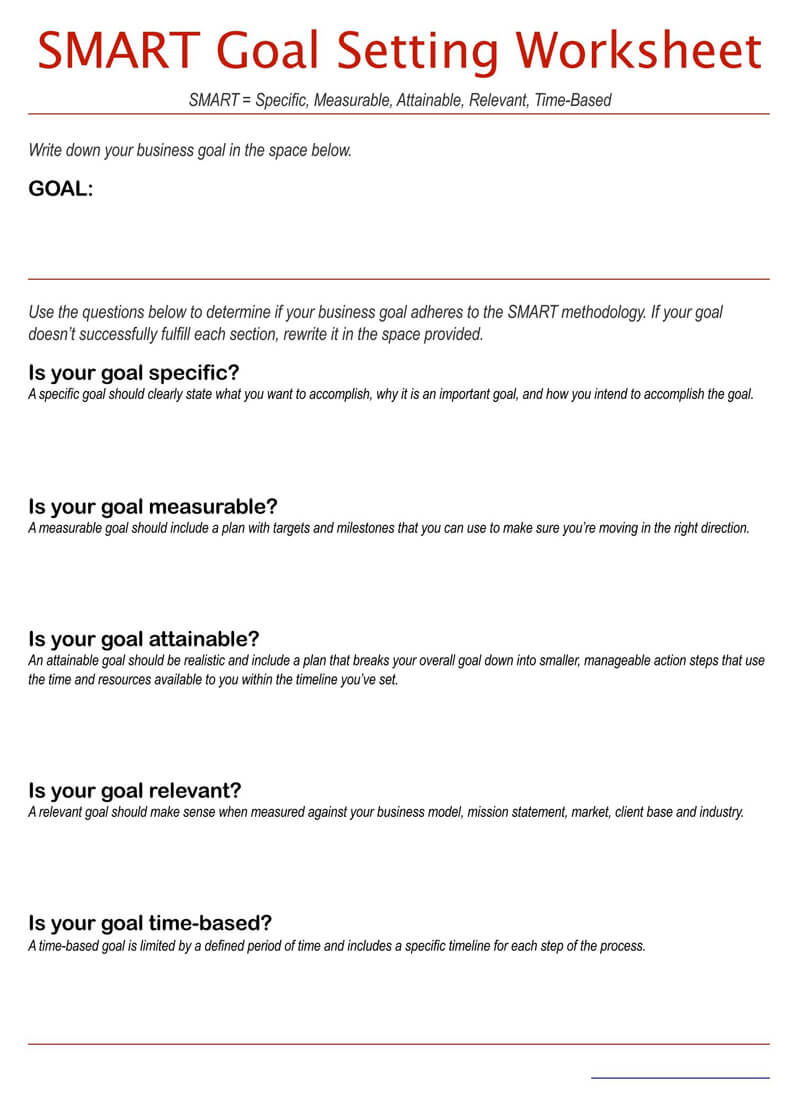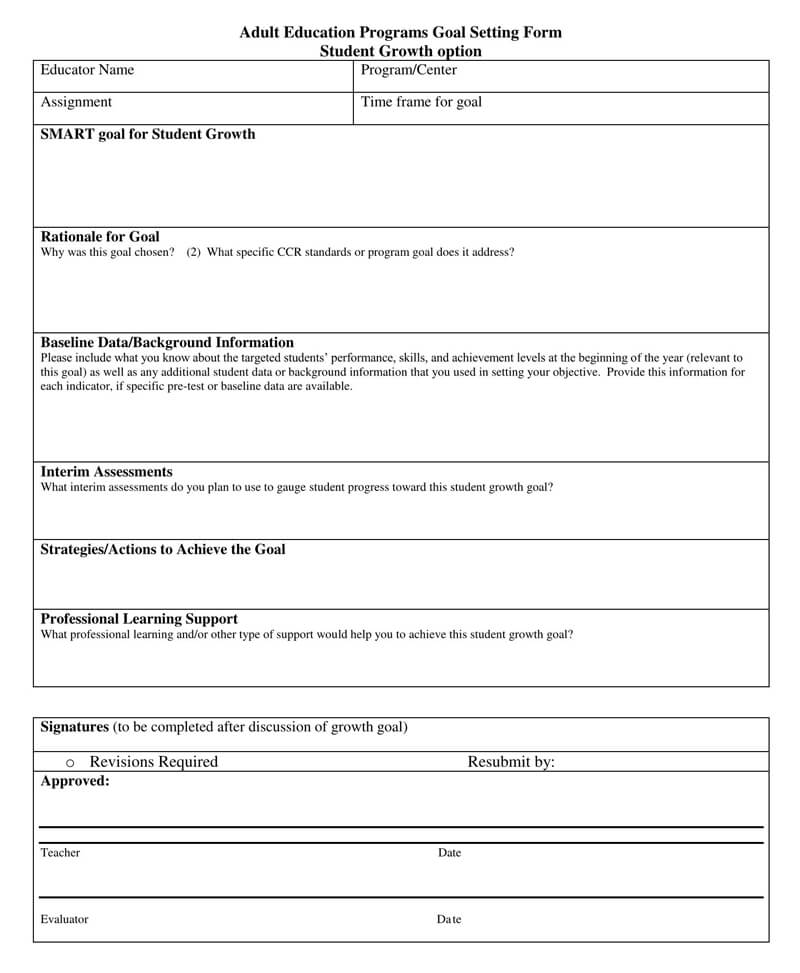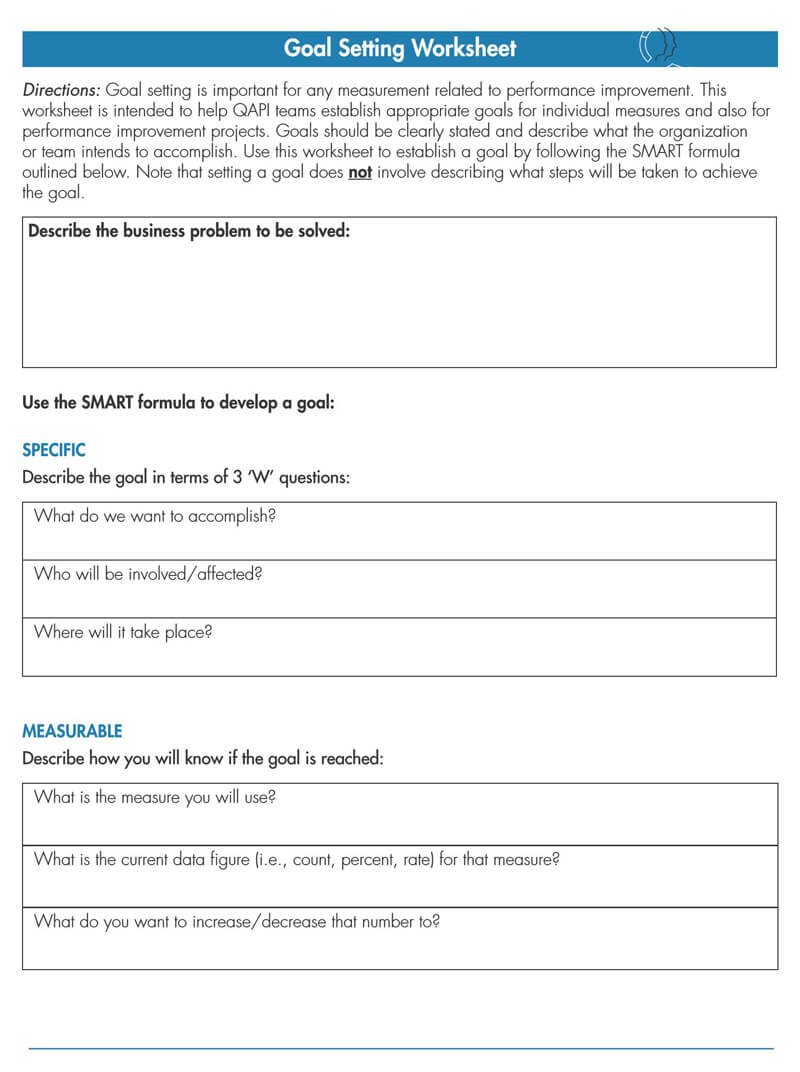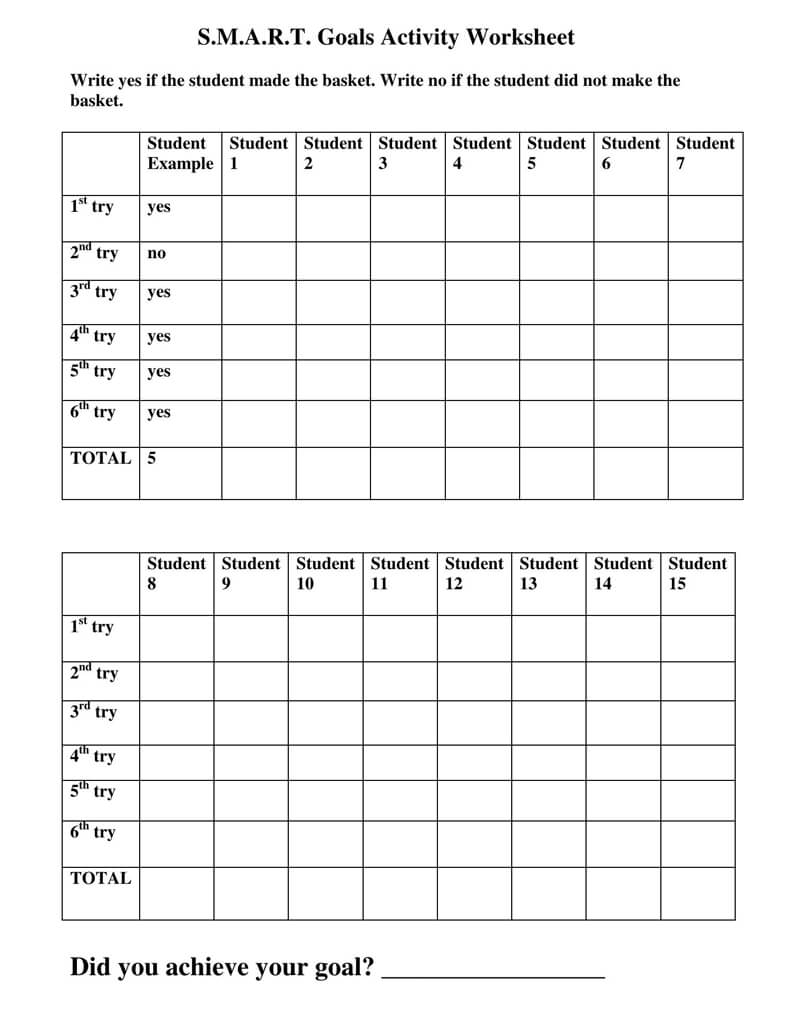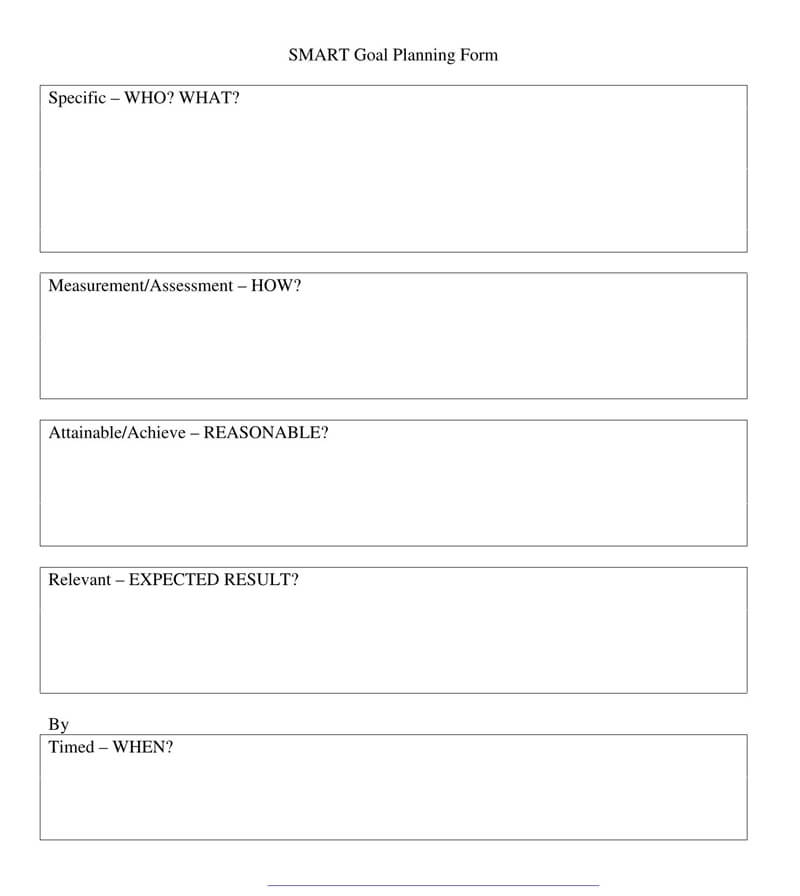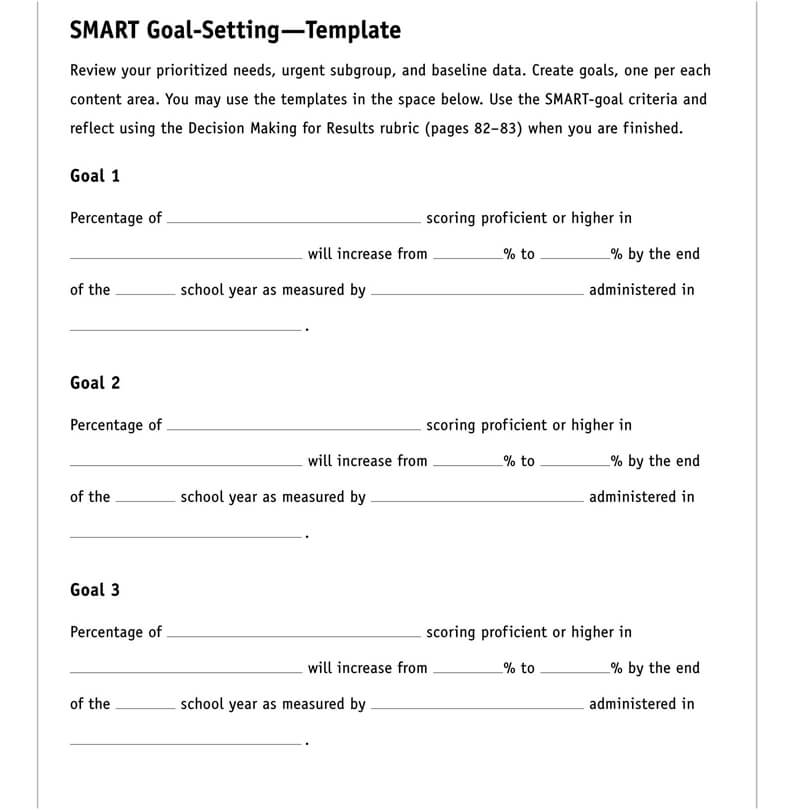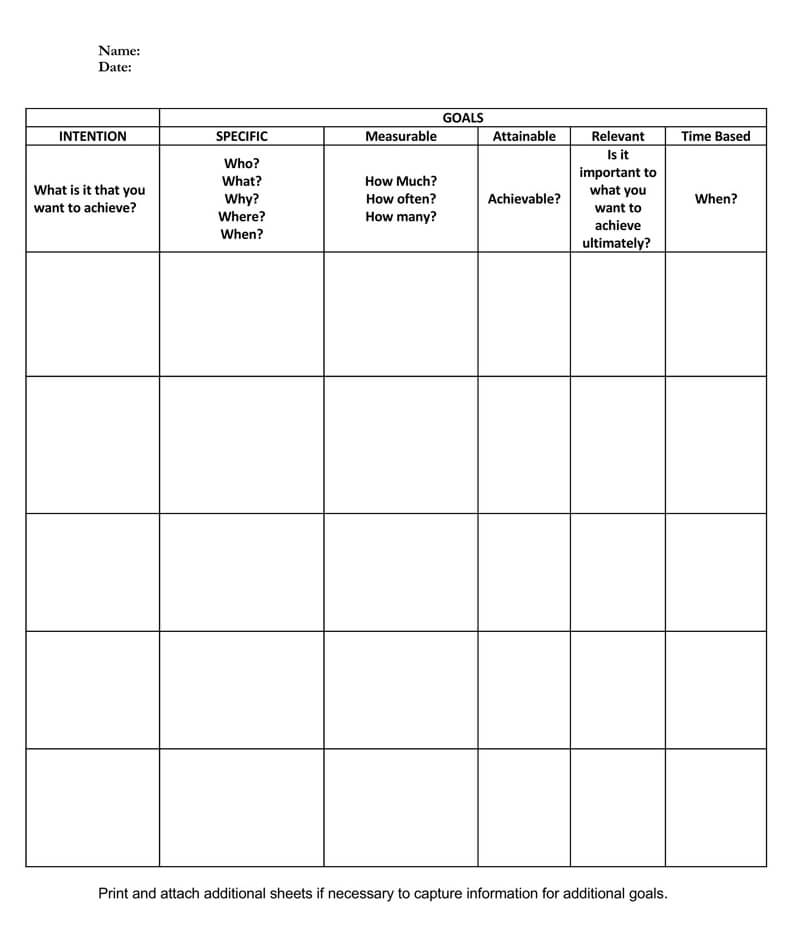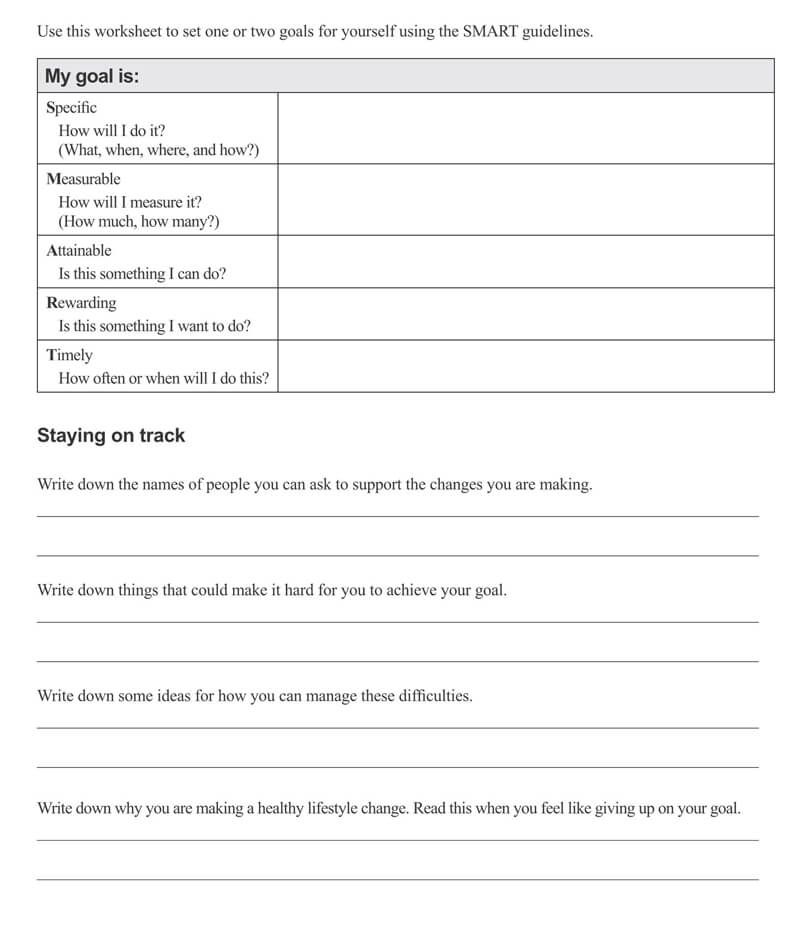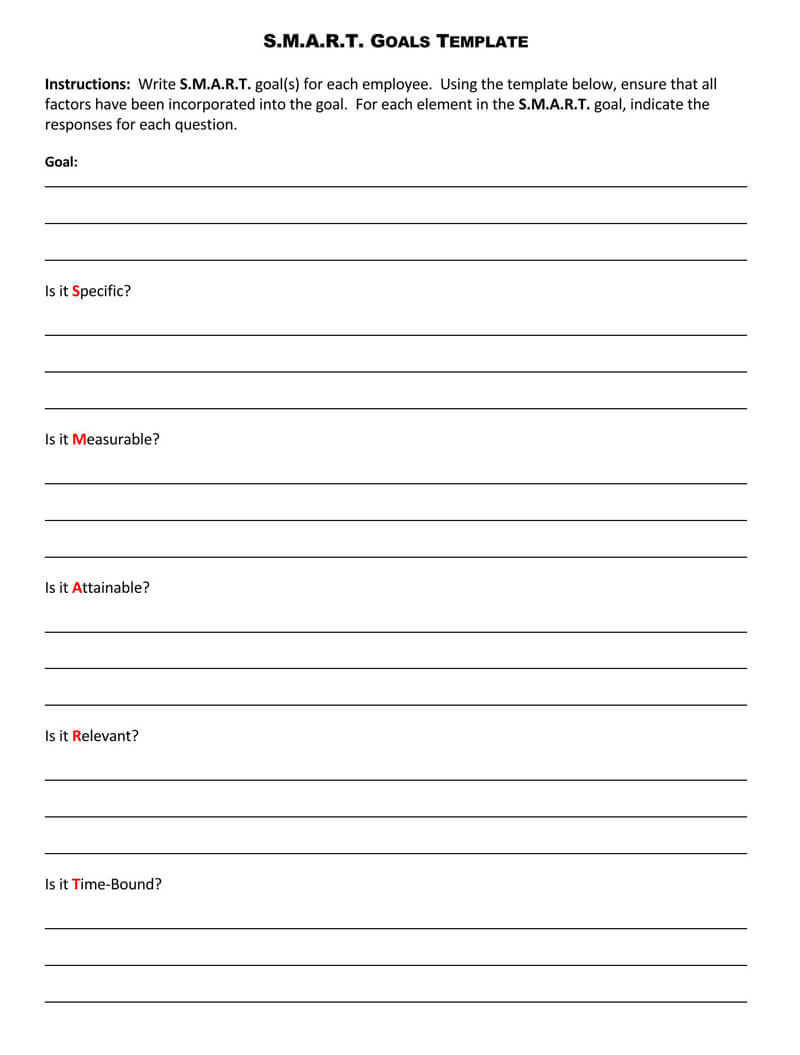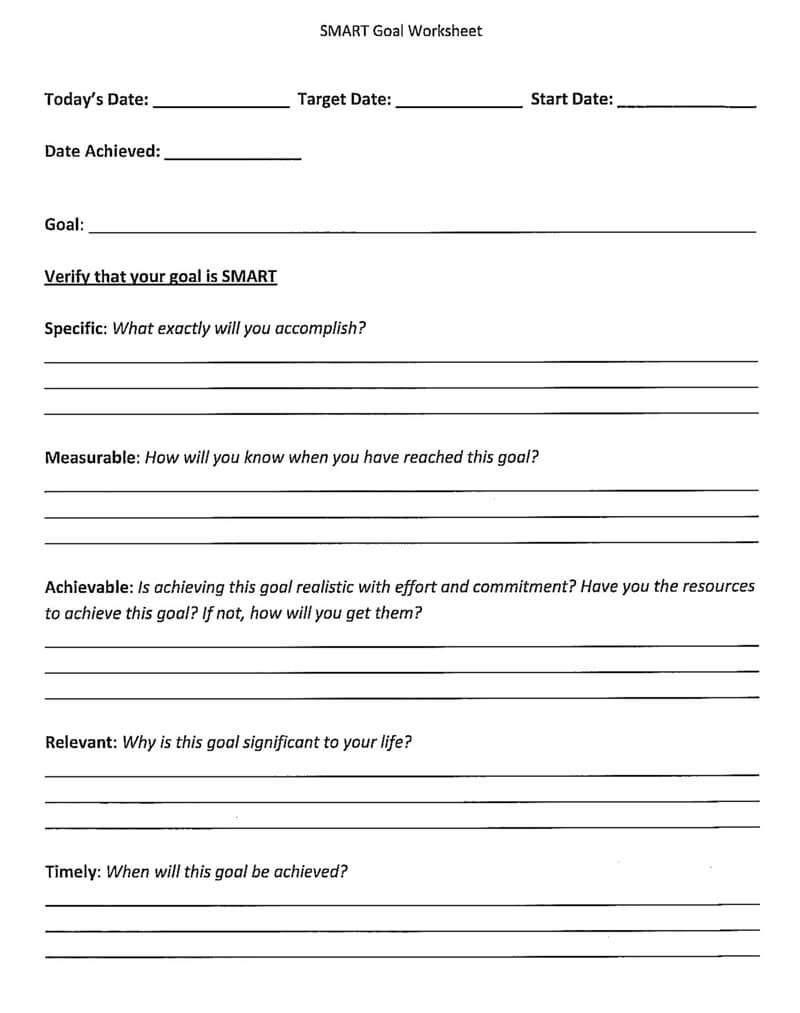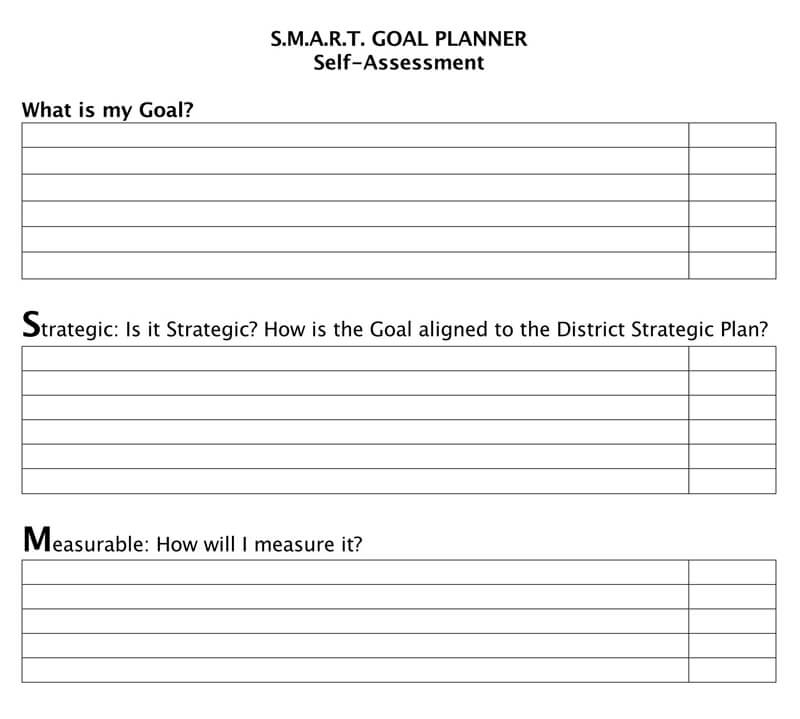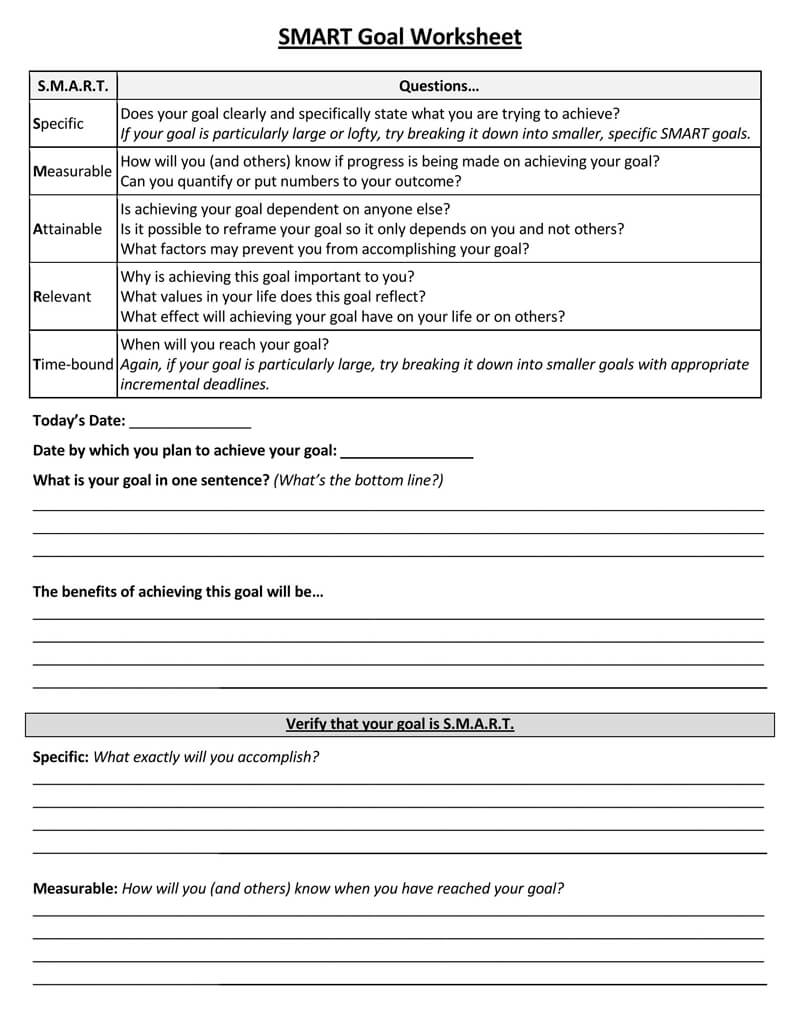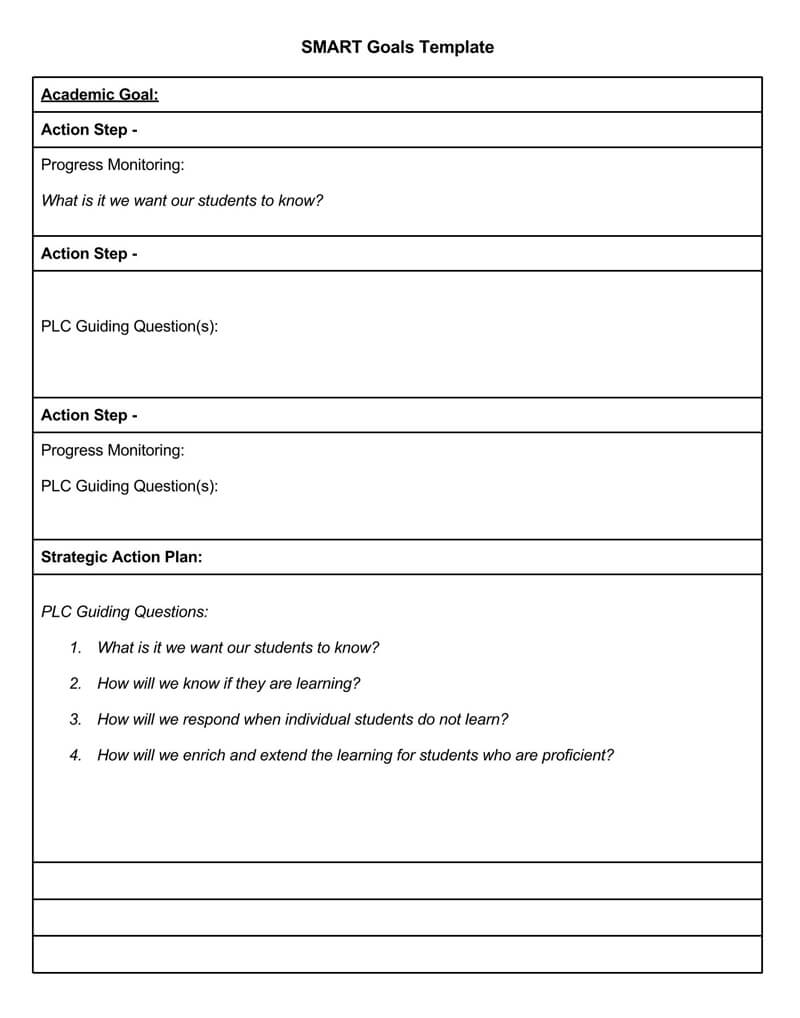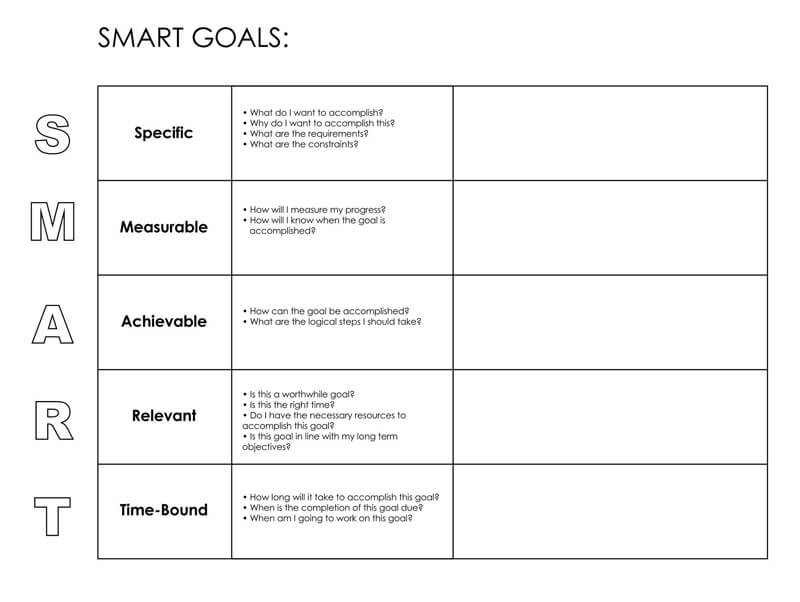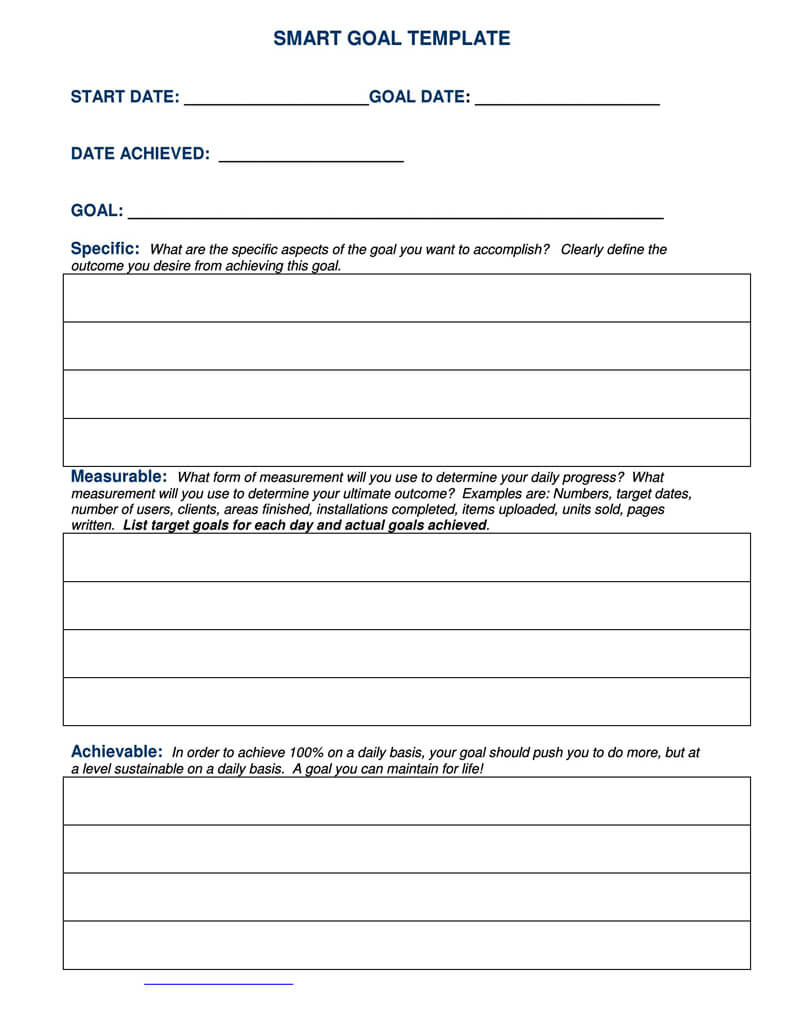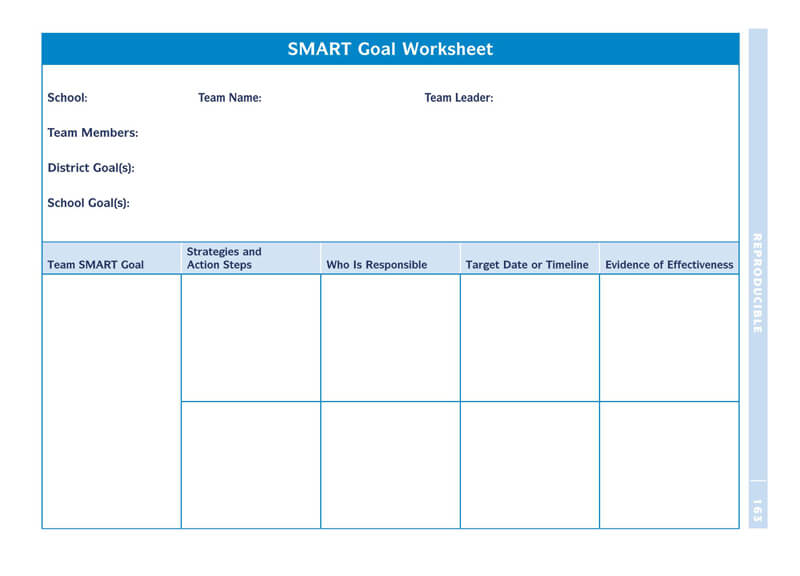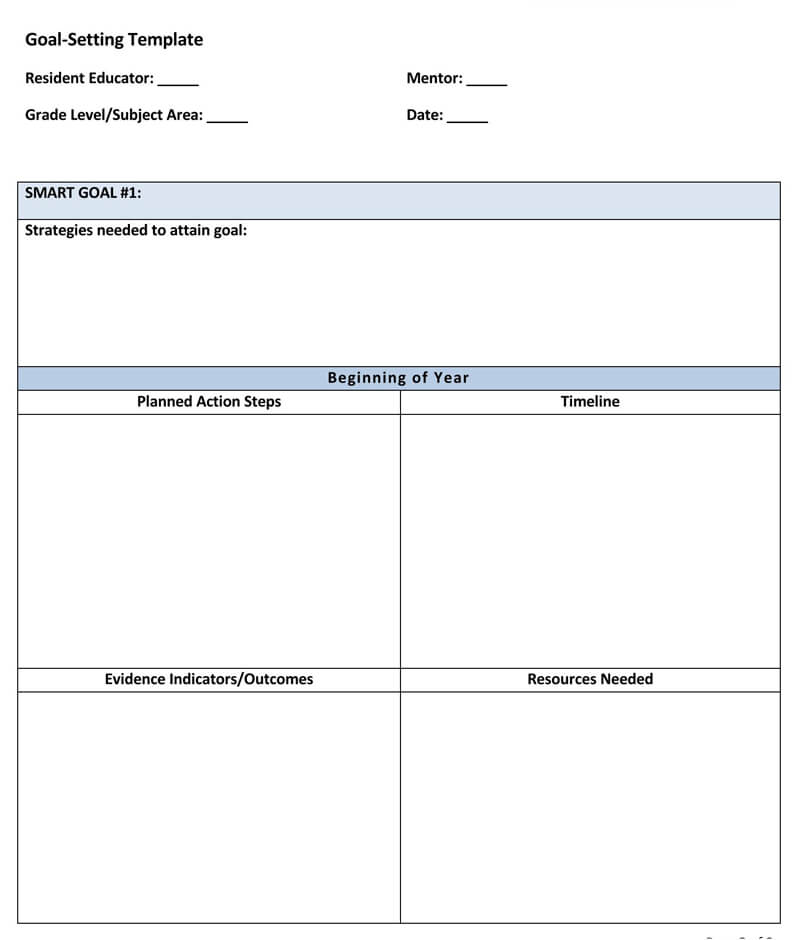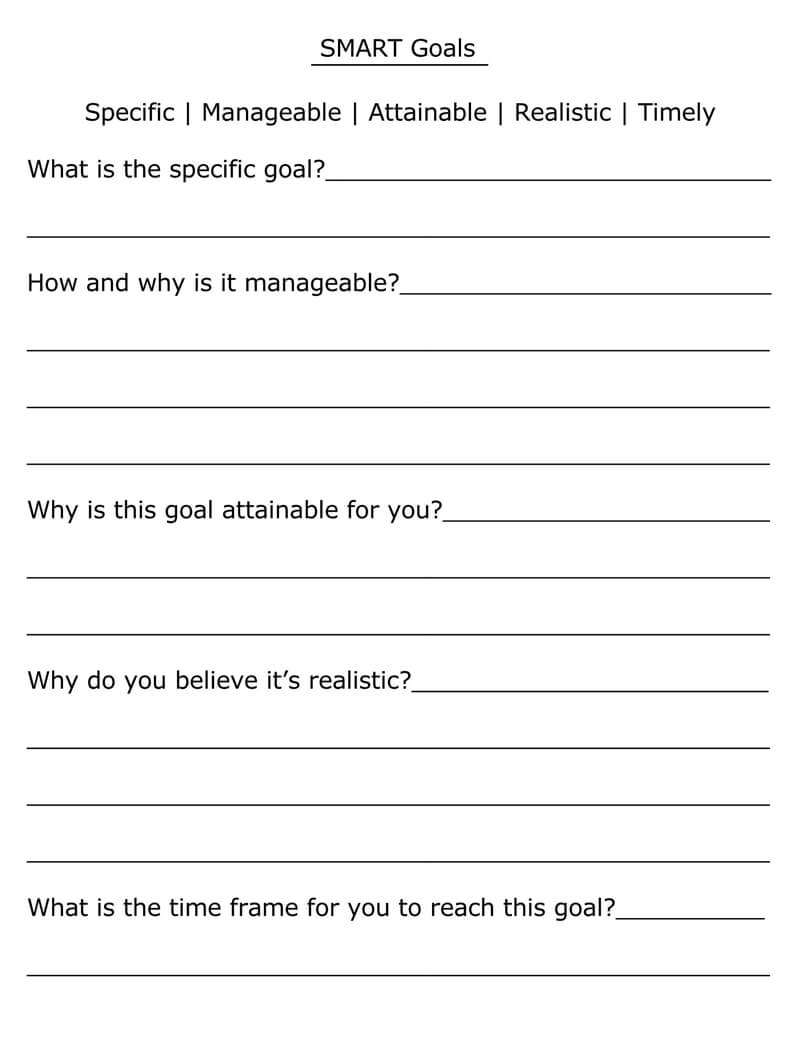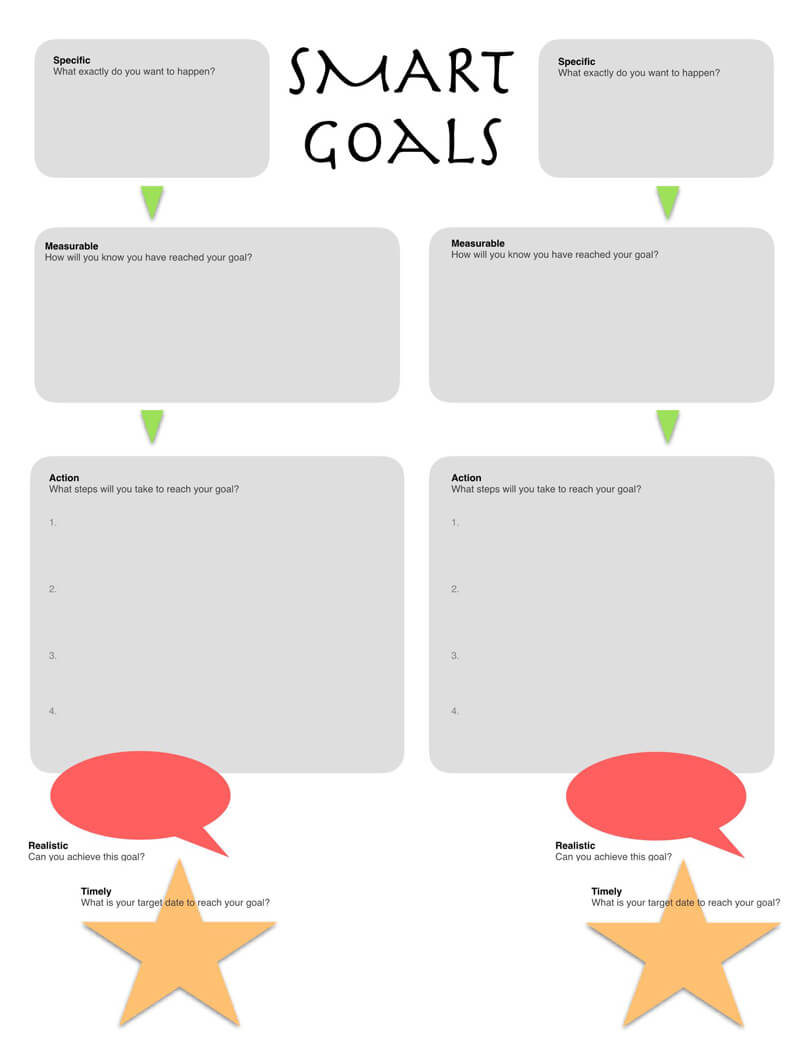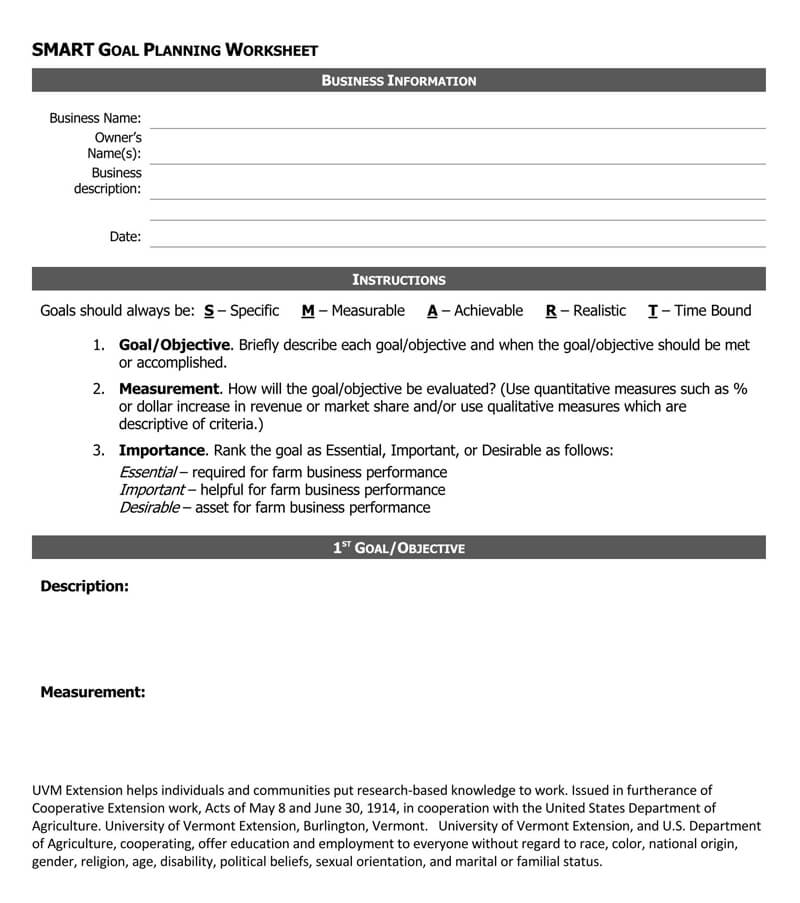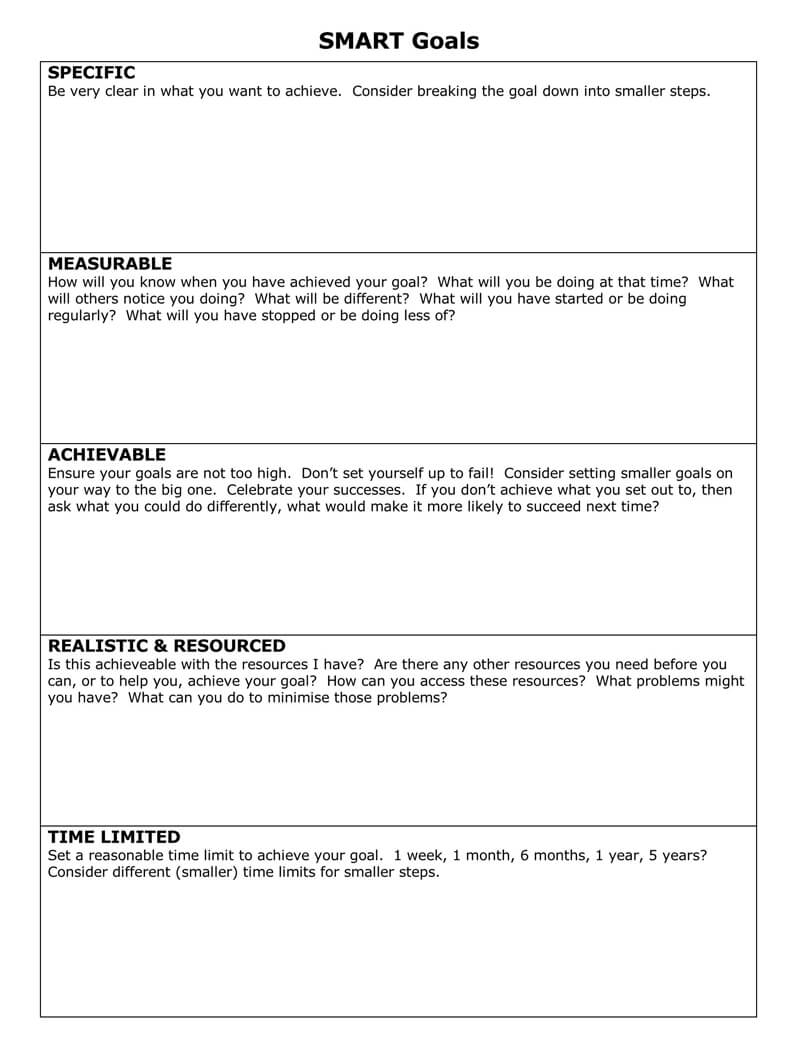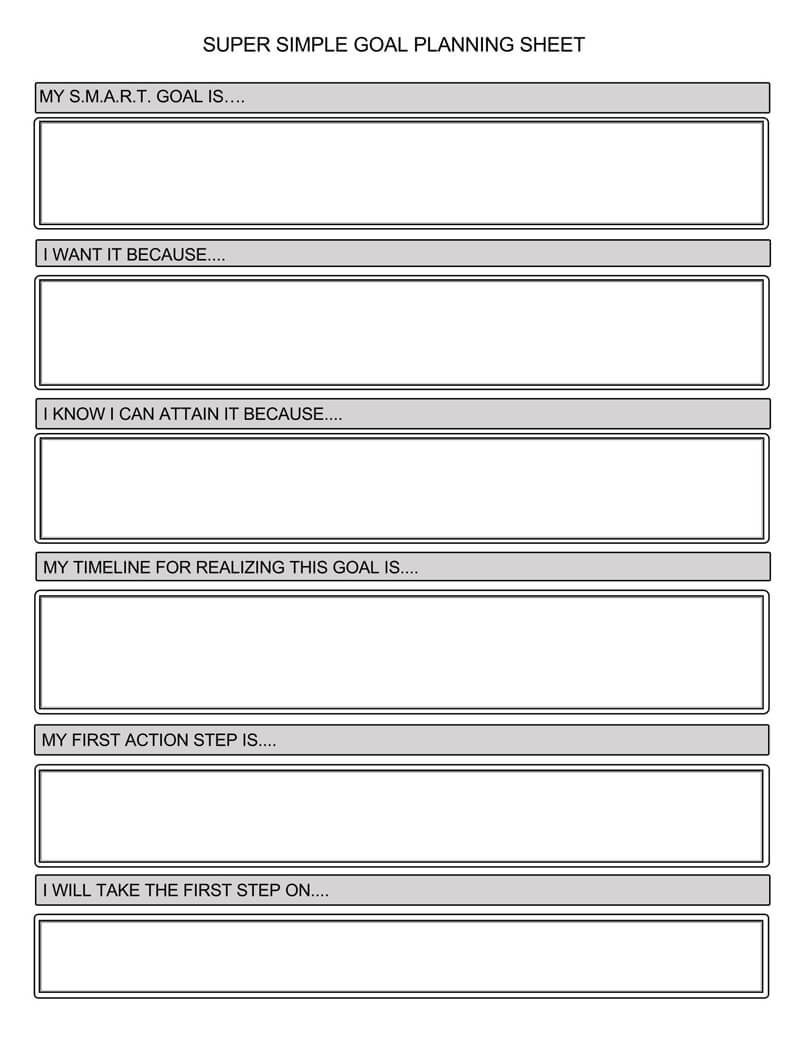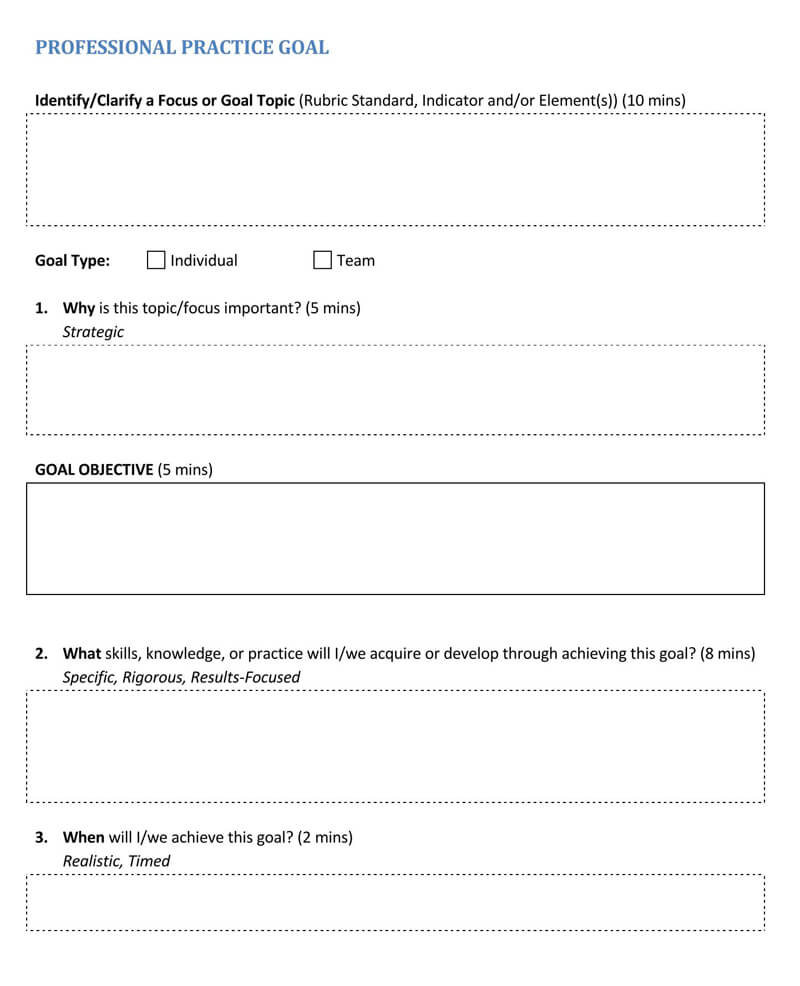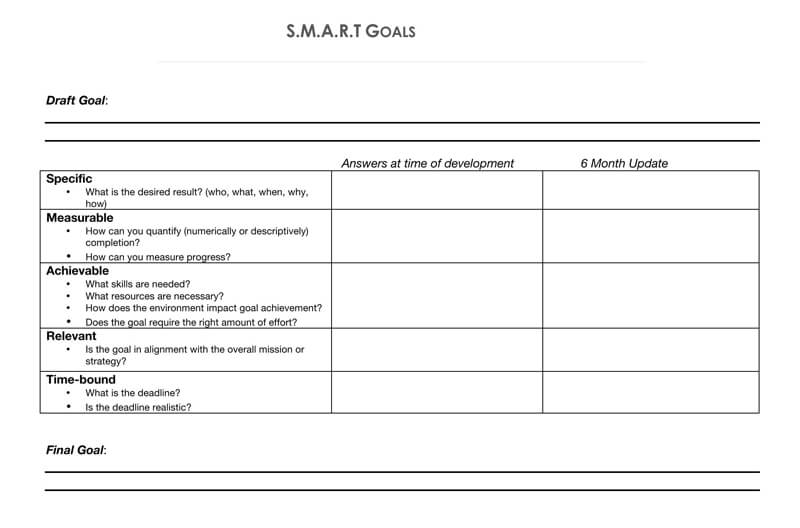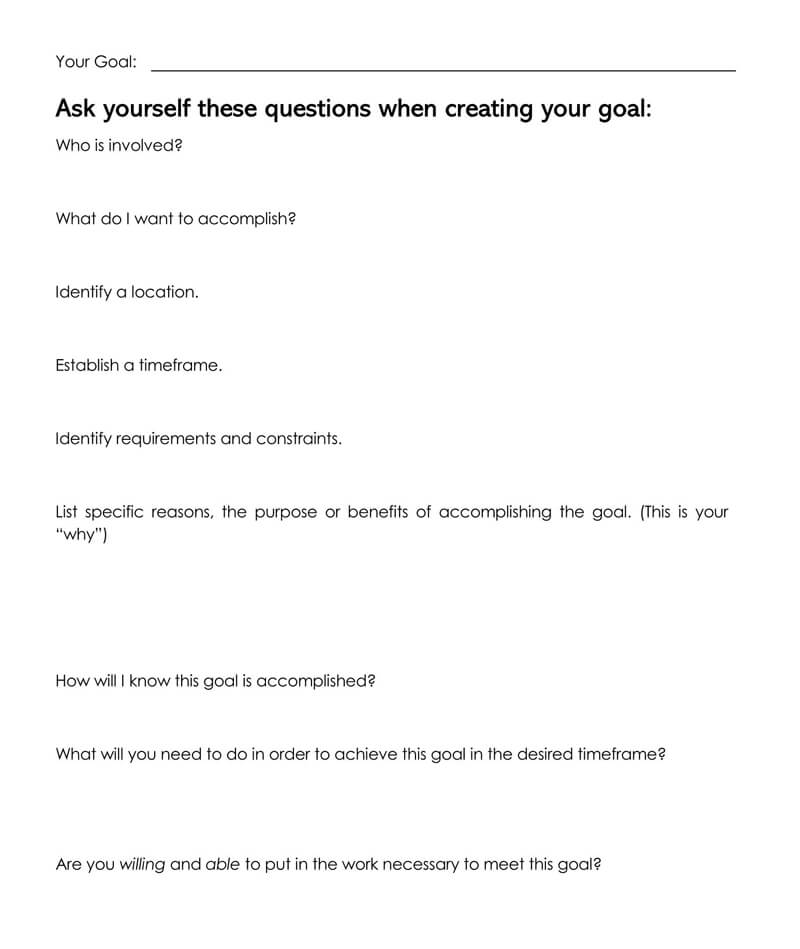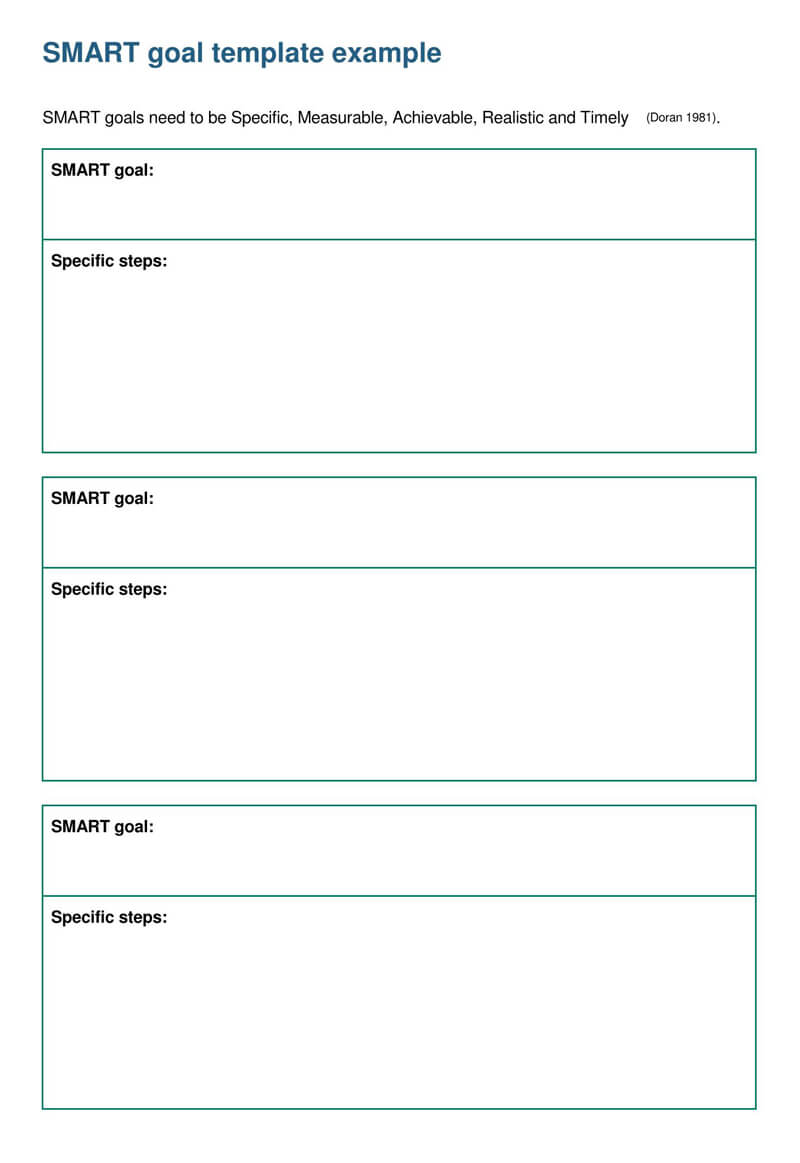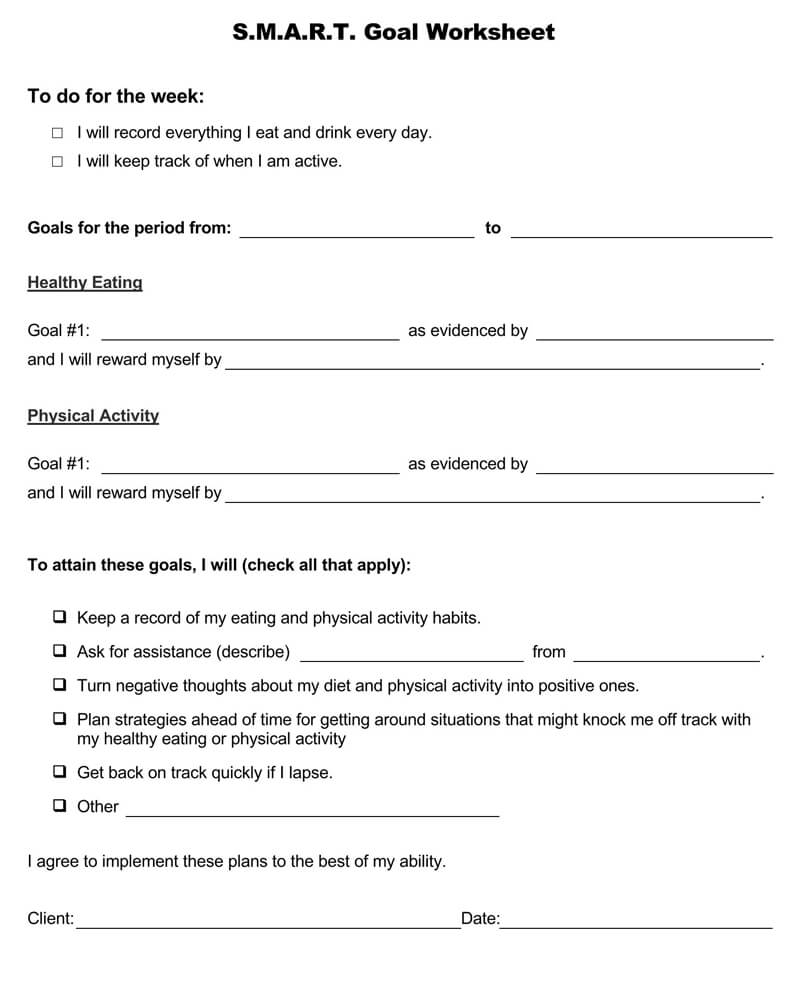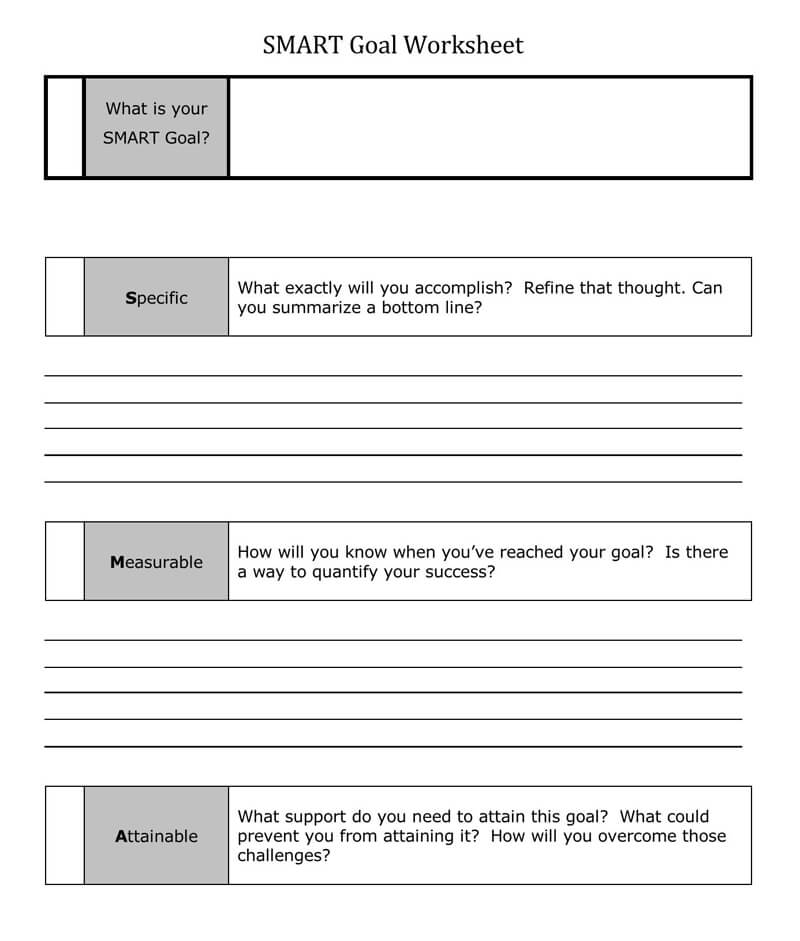Having a goal and succeeding at reaching it are two different things. How often have you started with the best intentions, only to find yourself falling behind and never actually getting to the finish line? Unfortunately, this is a common thread for many people who may feel like they can never reach for what they dream for.
Setting SMART goals could be a great way to help change things around and avoid all of the frustration of failed goals in the past. With SMART goals, you can create a plan that will help you know what the goal is, how to measure the goal, and when the goal needs to be done. You can use the SMART method to help you reach any goal because it gives you an actionable plan to succeed.
Choosing to set SMART goals allows you time to clarify your ideas, focus on the efforts that you put into the goals, and use your resources more productively. When you can do this, you are more likely to achieve anything that you want from your life.
What are SMART Goals?
Before you can start creating SMART goals, you need to know what the acronym of SMART is all about. SMART is simply an easy way to remember the steps of creating goals through this plan, ensuring that you choose the right goals, measure your progress, and work to improve yourself the whole time.
Defining the parameters of your goal will help guide you on the right path to achieving them. It removes all of the generalities and the guesswork because you have specific progress in place and a timeline you need to follow. This makes it more likely that you will reach all of your goals.
To ensure that you choose goals that are clear and reachable for you, not for someone else, you could choose goals that are:
- Specific: Your goal needs to be as specific as possible. Saying that you want to run a marathon is not enough. Saying that you would like to start running is pretty vague but choosing a goal of running a half marathon by Christmas is much easier to imagine.
- Measurable: Any goal you choose needs to be one you can measure. Otherwise, how will you know whether you are making progress or not? Think about the goal and how you could break it down into individual steps so you can cross them off the list and see that you are doing a fantastic job as you go.
- Achievable: This means that the goal needs to be achievable for you. Do not worry about whether someone else can achieve the goal or not; look at whether you can be successful with that goal. You want it to be challenging enough to push you forward, but not impossible based on your current position.
- Relevant or Reasonable: Is this a goal that you want to reach? Don’t pick a goal because it is on a list of recommended ones or because you know others trying to reach that goal. Instead, pick one that is relevant to your life, something you would be proud of if you achieved.
- Time-bound: Without a time limit on the goal, you will float around and hope things work out. It would be best if you put a deadline on when you would like to see the results. You can put the deadline on the whole goal or schedule individual deadlines for each step you set for the total goal. Then, keep yourself to that deadline to help push yourself forward.
Some experts recommend that the acronym is expanded to become SMARTER. The extra steps stand for Evaluated and Reviewed, allowing time for you to check whether the goal is practical and to receive feedback from others when necessary. These can easily fit into the SMART acronym as well.
History of SMART Goals
The idea of SMART goals has only been around since 1981, even though many people know how this works. George T. Doran was the creator of this methodology and documented the idea of SMART goals as a great tool to help anyone reach their dreams and goals. By breaking the process down into manageable and realistic steps, Doran proved that anyone could accomplish their goals as long as they had a plan.
How do SMART Goals work?
SMART goals are practical because you can make changes and adapt them to your chosen goal, no matter what is essential to you at the time. You can make SMART goals work for you by using the acronym to your full advantage.
Specific
When you set a new goal, you must be very specific about your desired result. The more details you add to the goal, the easier it is to list the steps and see results.
Some of the questions you can ask to ensure the goal is specific enough include:
- Who: Think about who will need to be involved in achieving the goal. In some cases, it will be only you, but there are situations where others need to be involved.
- What: Think about the exact thing that you would like to accomplish. Add in as many details about this part as possible.
- When: You can spend more time on this under the time-bound section of the process, but you can set a time frame that will help you stay on track.
- Where: If the goal is a personal one, you may not be able to put much under this category, but if it is relevant, include this information too.
- Which: Some requirements or obstacles may get in the way of reaching your goal. Think about these and come up with some ideas on how you will overcome them. If you want to open a business, for example, but have no experience in business, then taking some classes may be one of the steps you can take.
- Why: Think about why you would like to reach this goal. What is the motivation that will push you forward to success?
Measurable
Any goal that you set with this method needs to be measurable. This is the only way to track your progress with the goal, no matter how slow, and keep yourself motivated. Assessing the progress will keep you on track and ensure that you are making progress rather than staying in place. Measurable goals will keep you focused so that you can meet all of your goals.
There are a few questions that a measurable goal will address, including how many, how much, and how will you know when you can accomplish your goals? When you can answer all three of these about any goal you set, you know that you have a measurable goal.
Achievable
There is nothing wrong with picking a goal that is challenging for you. This helps to promote personal growth and can make you feel amazing as you work towards the result. But if you choose a goal way out of your reach, it will leave you worn down and frustrated when you fail.
Any goal you pick using the SMART method must be attainable and realistic. It still needs to be possible, even if it does stretch you a bit. When you set an achievable goal, you may be able to identify opportunities or other resources that you overlooked in the past that will help you get closer to the desired results.
Think about your current resources and skills before you pick a goal. Will those help you to reach your goal? For example, will you have enough time to gain any skills or resources needed to complete the goal in time? If the answer is yes, then your SMART goal is achievable, and you can continue with it.
Tip: Always be wary about setting a goal over which another person has power. While it may be an admirable goal to work on getting a promotion, many factors that are out of your control come into play here.
For example, a promotion may not come available for several years, others could apply with more experience, or you may find that the company is downsizing. You are faced with losing your job. Choosing a goal you have control over is a much more realistic option.
Relevant
Any goal that you choose needs to matter to you. If you have no passion behind the goal, then there is no point in pursuing it. Sometimes you can get swept up in a goal because it is the trendy thing to do or something that everyone else seems to want to focus on. But if it is not relevant to you personally, then there is no reason to pursue it.
To figure out whether a goal is relevant to you, you need to answer yes to the following questions:
- Does this goal seem like it is worthwhile to me?
- Is this the right time to go for this goal?
- Does this goal seem to match my other needs and efforts?
- Am I the right person to go after this goal, or would it be better for someone else to do it?
- Will the current socio-economic environment support this goal?
You must look closely at some of your dreams and see whether a specific goal makes sense for what you wish to accomplish.
Time-Bound
All goals need to have a deadline. This may seem a bit harsh, but without a deadline, you will keep pushing the goal further into the future, and it will never get done. The exact deadline you choose can depend on what you wish to accomplish and how big the overall goal is, but there must be a deadline. The point of these criteria in SMART goals is to make sure you focus on the goal and not let daily tasks take precedence over your dreams.
Take a look at your goal and determine how much time it would take to complete the goal. If the goal is huge, break it down into smaller steps and put a deadline on each. Then make it a priority to stick with those goals too.
SMART Goals Example
I will be able to drop down to part-time at my job after six months of running my own baking business on the side and marketing myself to clients around the area. This new business source will supplement my income.
- Specific: The goal is to start and grow their own baking business.
- Measurable: They will be able to measure their success by whether they will have enough to go part-time at their current job.
- Achievable: The goal allows them time to build up their business on the side while working.
- Relevant: This goal allows the goal-setter to work through a dream of theirs and hopefully cut down on a job they don’t like.
- Time-based: The goal-setter has set a time limit for when they hope to get this done.
I will write and publish my first book on parenting on KDP within one year.
- Specific: The goal-setter has decided what tasks they will complete, writing and publishing a book.
- Measurable: They will be able to set deadlines for getting the writing done and when to publish it.
- Achievable: The goal-setter can choose how much time they think they will need.
- Relevant: This may be a big dream of the goal-setter to write and publish their book.
- Time-based: The goal-setter has set a limit of one year to get it done.
Free SMART Goals Templates
These templates are easy to customize and edit on your own. You can find them pre-made and organized so you can sit down and see what you need to do to create a specific goal and map it out.
Reaching goals successfully always starts with successful planning. When you use the SMART goal setting template to create a clear blueprint of your goal, you are setting yourself up for success.
SMART Goals templates (Word)
SMART Goals templates (PDF)
Pros and Cons
There are many benefits to creating SMART goals for your needs, but there are some reasons why this method does not always work. Therefore, you must look at both sides to determine if this is the right goal-setting tool.
Pros
There are many benefits of choosing to set SMART goals. First, it forces you to define your goals and set deadlines to get them done. When you have a plan around your goals, you are more likely to achieve them.
Using a SMART goal, you will need to track the goal, set up a deadline, and have a way to measure whether you are making progress along the way. Then, if you miss one of your deadlines, you will know right away and can make the necessary adjustments, rather than waiting until the end and finding out you failed. Of course, this process does not work if you make the goal vague, which ensures that you will reach the goal.
Cons
While the SMART goal method is excellent for helping you make specific and measurable goals, there are a few drawbacks. Many agree that it is not best for long-term goals because the deadlines don’t allow for much flexibility. When you have to plan out every part of the goal, you become obsessed with completing the goal rather than sitting back and enjoying the process. Depending on your method for organization and getting things done, the SMART goal process could be too ambitious.
Conclusion
Setting goals is a crucial way to find motivation and challenge yourself daily. While many people have dreams and things they want to accomplish, it can be hard to devise a plan and take the proper steps to reach those goals. Year after year, they find themselves in the same position, with no idea how to make a change and move forward.
SMART goals can change all of that. With the right SMART goal, you can create a plan that will help you take control and move forward with all of your goals. When the goal is specific, measurable, achievable, relevant, and time-bound, you will find that you know exactly what you need to do to see success. Take a look at some of the steps above to see how to implement SMART goals to reach your target finally.
